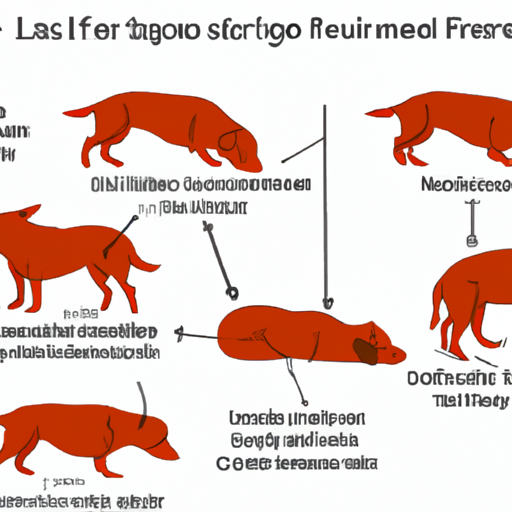As a caregiver, your role in your dog’s life goes beyond providing food and shelter. You are their advocate, their voice when they feel unwell but can’t verbalize it. It’s your watchful eyes that would notice when something is off. This guide aims to equip you with the knowledge you need to understand the final stages of liver failure in dogs.
Understanding the Role of the Liver
Your dog’s liver is a powerhouse of an organ. It detoxifies the blood, aids in digestion, produces proteins and enzymes, and stores vitamins. When this crucial organ begins to fail, your furry friend’s health can deteriorate rapidly.
Recognizing the Symptoms
While every dog is unique, there are common symptoms that could indicate liver failure. These include:
- Loss of appetite
- Weight loss
- Vomiting or diarrhea
- Increased thirst and urination
- Jaundice (yellowing of the skin and eyes)
Although these symptoms are common in various diseases, they should never be ignored. Prompt veterinary intervention is key to managing liver disease.
The Final Stages
In the final stages of liver failure, your dog’s symptoms will become more severe. These may include:
- Seizures or tremors
- Confusion or disorientation
- Swollen abdomen due to fluid accumulation
- Difficulty in breathing
- Coma
At this stage, your dog needs immediate medical attention. Your vet may recommend supportive treatments to ease your dog’s discomfort and prolong their life.
Management and Care
In the last stages, your prime focus should be on making your dog comfortable. Here are some steps you can take:
- Dietary Changes: Your vet may suggest a diet low in protein but high in calories.
- Medication: Medications can help manage symptoms and slow the progression of the disease.
- Hydration: Keep your dog well-hydrated to help flush toxins from their body.
- Love and Support: Perhaps most importantly, shower your dog with love and support during this difficult time.
| Management Steps | Importance |
|---|---|
| Dietary Changes | Helps reduce the load on the liver |
| Medication | Manages symptoms and slows disease progression |
| Hydration | Assists in toxin removal |
| Love and Support | Improves quality of life |
FAQ
Q: Can liver failure in dogs be reversed?
A: In some cases, if caught early and with appropriate treatment, liver function can be improved.
Q: How long can a dog live with liver disease?
A: This varies greatly depending on the progression of the disease, the dog’s overall health, and the treatment provided.
Q: Is liver disease painful for dogs?
A: While the disease itself may not cause pain, symptoms like abdominal swelling can cause discomfort.
Remember, as a caregiver, you play a vital role in your dog’s health. Your vigilance can make all the difference in their comfort and quality of life.



